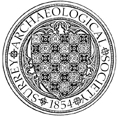Manfield School, Ash
A watching brief by the GMVEU on the redevelopment of the school site revealed a considerable quantity of mainly early 17th century Border Ware, including wasters and kiln furniture. Small quantities of medieval whiteware and late 17th/18th century Red Border Ware were also recovered. A kiln site clearly lies in the vicinity. (307)


